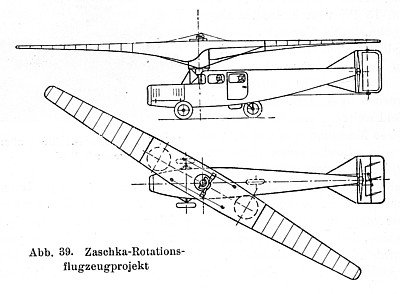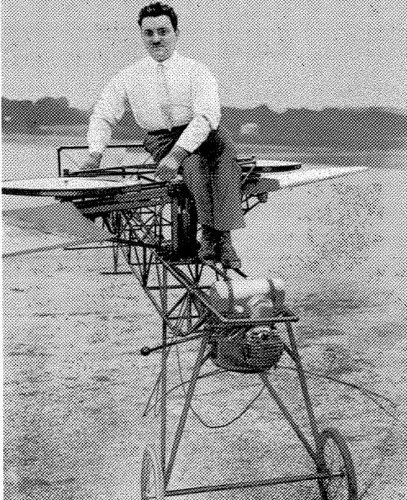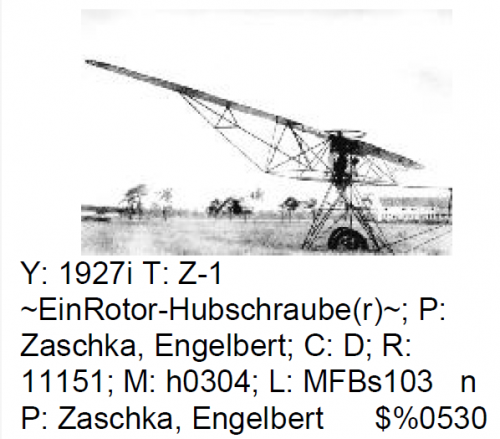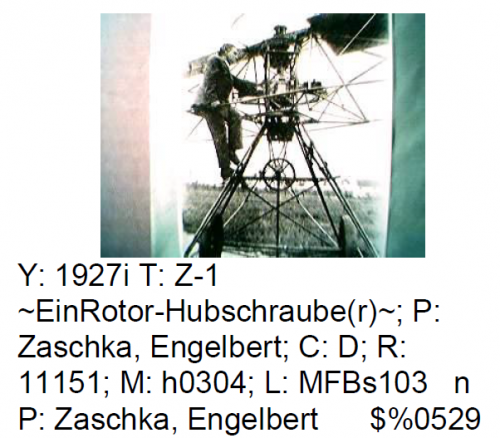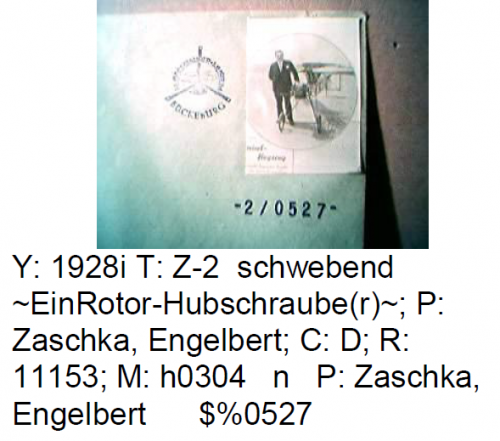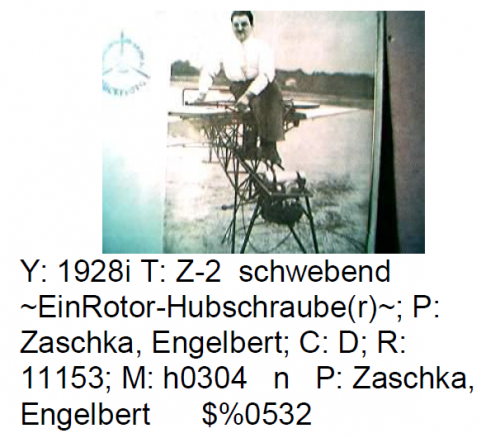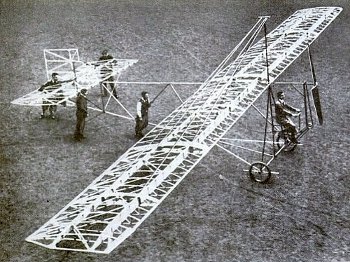You are using an out of date browser. It may not display this or other websites correctly.
You should upgrade or use an alternative browser.
You should upgrade or use an alternative browser.
Engelbert Zaschka Projects & Prototypes
- Thread starter hesham
- Start date
- Joined
- 11 March 2006
- Messages
- 8,606
- Reaction score
- 3,045
Re: Engelbert Zaschka Helicopter Project of 1928
Thanks for reminding us to this nearly forgotten inventor. Zaschka filed a patent for a combined helicopter/
autogyro, using a rotor, where each blade was fitted with a gyroscope (dotted circles in the drawing posted
by hesham). So I wouldn't agree to the description "fitted with two rotors" from Wikipedia.
Thanks for reminding us to this nearly forgotten inventor. Zaschka filed a patent for a combined helicopter/
autogyro, using a rotor, where each blade was fitted with a gyroscope (dotted circles in the drawing posted
by hesham). So I wouldn't agree to the description "fitted with two rotors" from Wikipedia.
- Joined
- 11 March 2006
- Messages
- 8,606
- Reaction score
- 3,045
Re: Engelbert Zaschka Helicopter Project of 1928
Not only "paper-warfare", but he actually cut metal !
Found in AHS Journal N°6 1957, this photo of Mr. Zaschka on an aircraft, weighing only 95 kg (210 lbs) and
fitted with an engine of just 300 cc.
The gyroscopes on each blade are recognisable, I think. Judging the size and those cables on the ground,
seemingly attached to the aircraft, maybe this was just a model ("proof-of-concept-demonstrator" nowadays),
not a manned type ?
hesham said:and it seemed to be,that designer had many drawings and patents to a helicopter designs.
Not only "paper-warfare", but he actually cut metal !
Found in AHS Journal N°6 1957, this photo of Mr. Zaschka on an aircraft, weighing only 95 kg (210 lbs) and
fitted with an engine of just 300 cc.
The gyroscopes on each blade are recognisable, I think. Judging the size and those cables on the ground,
seemingly attached to the aircraft, maybe this was just a model ("proof-of-concept-demonstrator" nowadays),
not a manned type ?
Attachments
- Joined
- 26 May 2006
- Messages
- 32,639
- Reaction score
- 11,810
Re: Engelbert Zaschka Helicopter Project of 1928
My dear Jemiba,
that's Zaschka Z-2,the early drawing in this topic was Z-3,and here is Z-1,page 56;
http://kulturserver-nds.de/home/hubtest/medien/Neg.Nr.GUN.pdf
Jemiba said:hesham said:and it seemed to be,that designer had many drawings and patents to a helicopter designs.
Not only "paper-warfare", but he actually cut metal !
Found in AHS Journal N°6 1957, this photo of Mr. Zaschka on an aircraft, weighing only 95 kg (210 lbs) and
fitted with an engine of just 300 cc.
The gyroscopes on each blade are recognisable, I think. Judging the size and those cables on the ground,
seemingly attached to the aircraft, maybe this was just a model ("proof-of-concept-demonstrator" nowadays),
not a manned type ?
My dear Jemiba,
that's Zaschka Z-2,the early drawing in this topic was Z-3,and here is Z-1,page 56;
http://kulturserver-nds.de/home/hubtest/medien/Neg.Nr.GUN.pdf
Attachments
Vladimir
I really should change my personal text
- Joined
- 22 September 2015
- Messages
- 321
- Reaction score
- 37
Re: Engelbert Zaschka Helicopter Project of 1928
Hi, more photos:
source here: http://histaviation.com/zaschka_helicopter.html
Hi, more photos:
source here: http://histaviation.com/zaschka_helicopter.html
Attachments
-
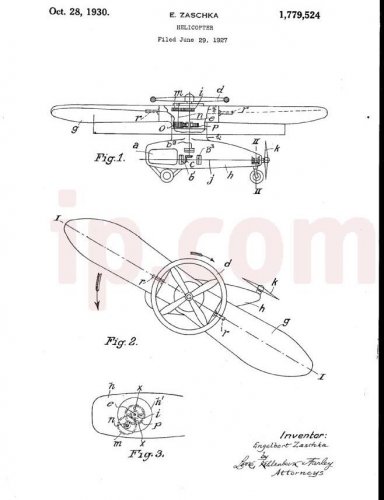 img4510.jpg52.2 KB · Views: 26
img4510.jpg52.2 KB · Views: 26 -
 wwb_img2689.jpg54.6 KB · Views: 24
wwb_img2689.jpg54.6 KB · Views: 24 -
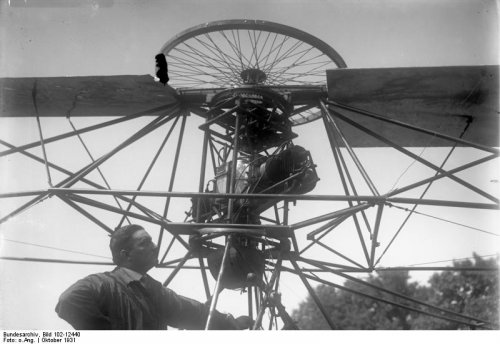 Bundesarchiv_Bild_102-12440,_Rotationsflugzeug_beim_Senkrechtstart.jpg57.3 KB · Views: 27
Bundesarchiv_Bild_102-12440,_Rotationsflugzeug_beim_Senkrechtstart.jpg57.3 KB · Views: 27 -
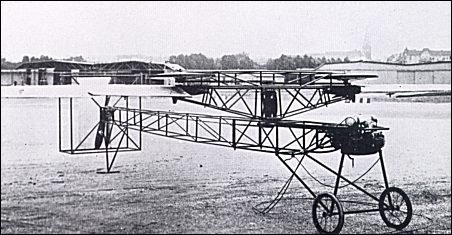 zaschka.jpg33.5 KB · Views: 40
zaschka.jpg33.5 KB · Views: 40 -
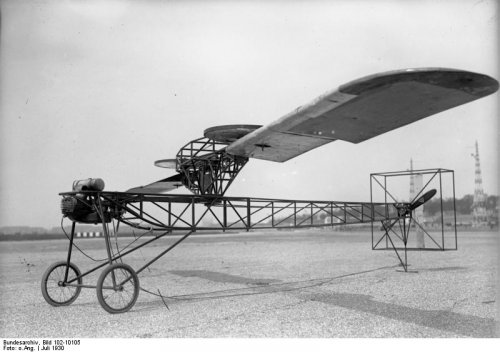 Bundesarchiv_Bild_102-10105,_Berlin-Tempelhof,_Modell_eines_Kreisel-Flugzeuges.jpg55.1 KB · Views: 41
Bundesarchiv_Bild_102-10105,_Berlin-Tempelhof,_Modell_eines_Kreisel-Flugzeuges.jpg55.1 KB · Views: 41 -
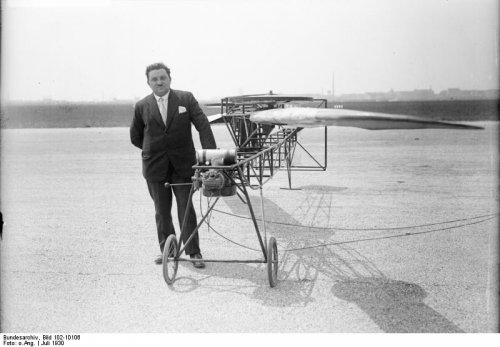 Bundesarchiv_Bild_102-10106,_Engelbert_Zaschka_mit_Modell_des_Kreisel-Flugzeugs.jpg55.8 KB · Views: 29
Bundesarchiv_Bild_102-10106,_Engelbert_Zaschka_mit_Modell_des_Kreisel-Flugzeugs.jpg55.8 KB · Views: 29
Engelbert1895
I really should change my personal text
- Joined
- 14 June 2016
- Messages
- 2
- Reaction score
- 1
Re: Engelbert Zaschka Helicopter Project of 1928
German inventor Engelbert Zaschka (1895-1955) was one of the forgotten pioneers of out-of-the-box-thinking. There's a new video about Engelbert Zaschka on YouTube:
https://www.youtube.com/watch?v=0bjcyA-dF7E
Built in 1928 in Berlin (Germany) the Zaschka was a folding 3-wheeled car. Its inventor was Engelbert Zaschka who amongst other things was one of Germany’s first helicopter pioneers. Zaschka's 3-wheeler was designed so that it could be taken apart within 5 minutes and could be "knocked down" into three main sections and so the vehicle did not require a garage. Each section was built around a tubular frame with a canvas body stretched over the frame and clipped into position. The vehicle had a chain driven rear wheel and was capable of 25 to 30 mpg. Features of the vehicle are said to have been important to Richard Buckminster Fuller and his Dymaxion car in 1933.

German inventor Engelbert Zaschka (1895-1955) was one of the forgotten pioneers of out-of-the-box-thinking. There's a new video about Engelbert Zaschka on YouTube:
https://www.youtube.com/watch?v=0bjcyA-dF7E
Built in 1928 in Berlin (Germany) the Zaschka was a folding 3-wheeled car. Its inventor was Engelbert Zaschka who amongst other things was one of Germany’s first helicopter pioneers. Zaschka's 3-wheeler was designed so that it could be taken apart within 5 minutes and could be "knocked down" into three main sections and so the vehicle did not require a garage. Each section was built around a tubular frame with a canvas body stretched over the frame and clipped into position. The vehicle had a chain driven rear wheel and was capable of 25 to 30 mpg. Features of the vehicle are said to have been important to Richard Buckminster Fuller and his Dymaxion car in 1933.
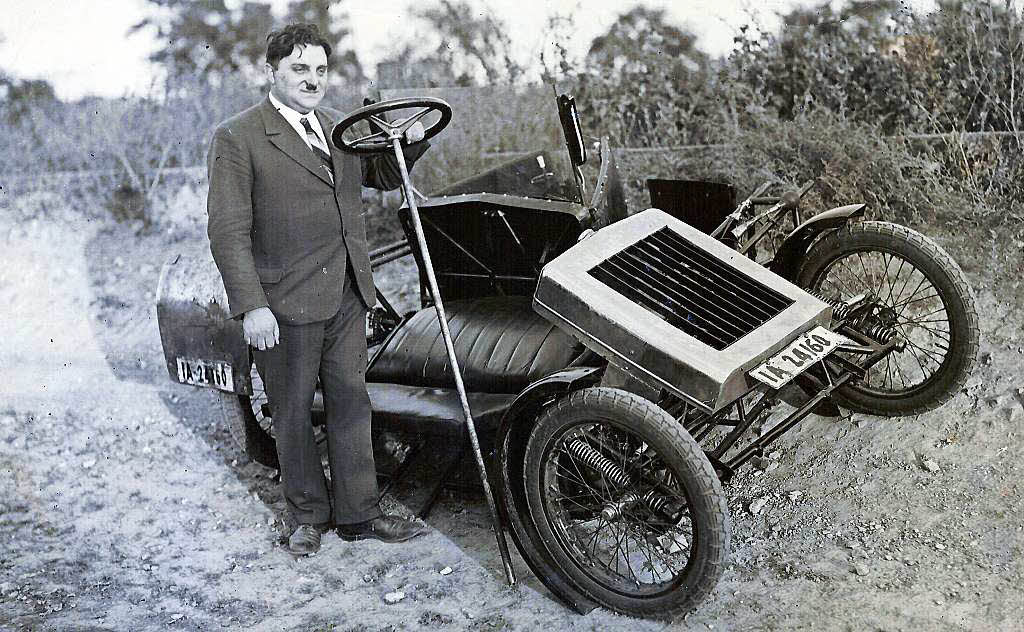
- Joined
- 11 March 2006
- Messages
- 8,606
- Reaction score
- 3,045
Re: Engelbert Zaschka Helicopter Project of 1928
The answer is in the patnet: "This invention relates to an improved helicopter in which the lifting propeller
and a gyrating fly-mass are continually connected with one another in rotation and can be coupled with the
driving propeller in order to drive it as a substitute for the motor if this latter should have got out of order
from any reason"
FXXII said:What was the purpose of the gyroscopes in the rotating wing? ....
The answer is in the patnet: "This invention relates to an improved helicopter in which the lifting propeller
and a gyrating fly-mass are continually connected with one another in rotation and can be coupled with the
driving propeller in order to drive it as a substitute for the motor if this latter should have got out of order
from any reason"
FXXII
I really should change my personal text
- Joined
- 3 September 2018
- Messages
- 51
- Reaction score
- 23
Thanks for the pointer.
But I don´t understand the mechanics. How are two gyroscopes coupled? They must be rotating in opposite directions, otherwise the precession will tip the aircraft to one side. Further, will a rotating gyroscope that is itself being moved in an arc in its plane of rotation continue in that circular movement? An engineering view would be most helpfull.
But I don´t understand the mechanics. How are two gyroscopes coupled? They must be rotating in opposite directions, otherwise the precession will tip the aircraft to one side. Further, will a rotating gyroscope that is itself being moved in an arc in its plane of rotation continue in that circular movement? An engineering view would be most helpfull.
- Joined
- 11 March 2006
- Messages
- 8,606
- Reaction score
- 3,045
I have no idea, if this principle would have worked in reality, but the patent actually doesn't speak of
a gyroscope, but just of a fly-mass/flywheel-mass. I would interprete this as just a storage for energy,
that would allow the rotor a longer time to rotate after an engine failure. If the rotation of those masses
really would have increased the natural torque of the rotor, I don't know.
a gyroscope, but just of a fly-mass/flywheel-mass. I would interprete this as just a storage for energy,
that would allow the rotor a longer time to rotate after an engine failure. If the rotation of those masses
really would have increased the natural torque of the rotor, I don't know.
FXXII
I really should change my personal text
- Joined
- 3 September 2018
- Messages
- 51
- Reaction score
- 23
If a flywheel is meant for a rotor to keep turning after engine failure, then it must be attached to the rotor axle. A flywheel incorporated in the rotorblade itself would not transfer its energy to the rotation of the rotor.
So the mystery remains....
So the mystery remains....
Engelbert1895
I really should change my personal text
- Joined
- 14 June 2016
- Messages
- 2
- Reaction score
- 1
https://www.youtube.com/watch?v=8DSUxTQFMt4
VIDEO (german television): He's brave and agile, quick to get there and just as quick to get out. The helicopter is the loner among the means of transport. An individualist who still lacks mass suitability today. Its history is confused, its technical achievements contradictory. Nevertheless, the helicopter stands like no other aircraft for one of mankind's greatest dreams. Freiburg's Engelbert Zaschka has fallen in love with it. He is one of the many inventors in the 1920s who worked independently on devices to bring people into the air. The helicopter.
VIDEO (german television): He's brave and agile, quick to get there and just as quick to get out. The helicopter is the loner among the means of transport. An individualist who still lacks mass suitability today. Its history is confused, its technical achievements contradictory. Nevertheless, the helicopter stands like no other aircraft for one of mankind's greatest dreams. Freiburg's Engelbert Zaschka has fallen in love with it. He is one of the many inventors in the 1920s who worked independently on devices to bring people into the air. The helicopter.
- Joined
- 11 March 2012
- Messages
- 3,016
- Reaction score
- 2,684
Those gyroscopes could have fulfilled two roles: propulsion and stability.
If the gyroscopes were geared to the main rotor mast, their stored energy could help keep the main rotor spinning after the engine quits .... sort of a mechanical aid to auto-rotation.
Secondly, gyroscopes would stabilize the main rotor similar to the stabilizer bar on Bell 47.
If the gyroscopes were geared to the main rotor mast, their stored energy could help keep the main rotor spinning after the engine quits .... sort of a mechanical aid to auto-rotation.
Secondly, gyroscopes would stabilize the main rotor similar to the stabilizer bar on Bell 47.
- Joined
- 26 May 2006
- Messages
- 32,639
- Reaction score
- 11,810
FXXII said:If a flywheel is meant for a rotor to keep turning after engine failure, then it must be attached to the rotor axle. A flywheel incorporated in the rotorblade itself would not transfer its energy to the rotation of the rotor.
So the mystery remains....
Thanks for the Info.
Similar threads
-
-
-
-
Akaflieg Berlin B.11 FSW Sailplane Project
- Started by hesham
- Replies: 2
-
German postwar 4x4 projects Transportpanzer-2, Spähpanzer-3 and ATAK
- Started by moin1900
- Replies: 4

